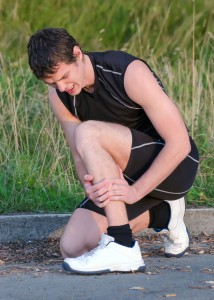 It’s the nemesis of many athletes (or aspiring athletes): shin splints. That dreaded pain in the lower leg that seems to grip your entire calf in a painful hold that makes it difficult, if not impossible, to exercise or even walk without discomfort.
It’s the nemesis of many athletes (or aspiring athletes): shin splints. That dreaded pain in the lower leg that seems to grip your entire calf in a painful hold that makes it difficult, if not impossible, to exercise or even walk without discomfort.
The condition gets its name from the fact that the pain often runs along the shinbone. While the exact nature and location of the pain can vary, it is recognized by a telltale burning or searing pain going down your lower leg.
Causes and occurrence
Shin splints are caused by the stress that repetitive movement or exertion puts on your muscles and connective tissues.
This painful condition often strikes people who have just started a new fitness regimen or have stepped up their workout efforts. It’s especially common among runners or people who play sports on flat, hard surfaces. Frequently, people will experience them when first using a treadmill or other fitness equipment. Those who are in the military also often endure shin splints, especially when they are doing a lot of hiking that involves uphill terrain or long distances.
If you spend any time in a gym or any place where athletes congregate, you will surely hear lots of complaints about shin splints—followed by much commiserating and many suggestions of supposed cures or preventative measures.
Treatment and prevention
Needless to say, the best way to deal with shin splints is to avoid getting them in the first place. Athletes and fitness buffs swear by a variety of “surefire” shin splint avoidance measures.
Choosing the right shoes can big a big help in preventing shin splints. (And as a bonus, good footwear can also prevent many other issues, and keep you more comfortable while walking or working out.) You may also find that inserting additional arch supports can help. Many people also swear by stretches and toe raises that can boost the strength and flexibility of your calf muscles. While these may not work for everyone, they’re worth a try.
If you are unlucky enough to be stricken by shin splints, the usual recommended treatment is a combination of rest, ice and pain medications such as ibuprofen. Many people find that shin splints gradually decrease as their body becomes accustomed to the exercise level.
For tips on how workout equipment and fitness accessories can help make your workout more comfortable, contact Fitness 4 Home Superstore today. We’re proud to serve the Phoenix area and wherever you may be.

